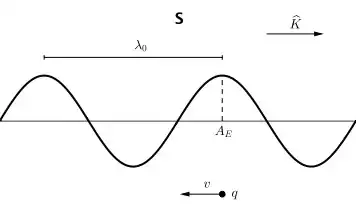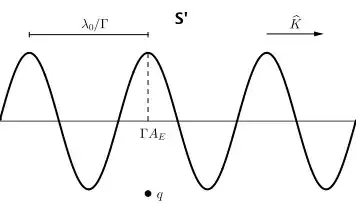Special Relativity can be used to show that the magnetic force on a charge in parallel motion next to an infinite wire can be understood as an electrostatic force (when viewed from the rest frame of the charge). There are several posts and nice YouTube videos that explains this.
But how does this work in the case of light waves? Here magnetism cannot be an electrostatic effect in the rest frame, since no charges are present to produce the static field. So, from the perspective of special relativity, what causes the magnetic force of light in the rest frame of the charge?
(As a sidenote, I am also aware that the magnetic force is not an electrostatic effect in general. For non-parallel motion dynamic equations must be used, as this textbook shows)

